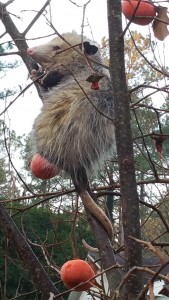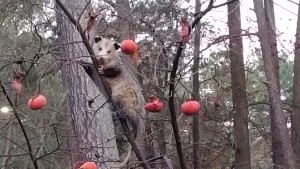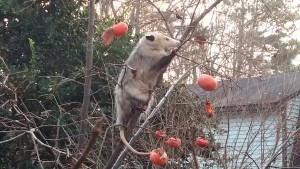Look Who Came to Breakfast!
go.ncsu.edu/readext?386321
en Español / em Português
El inglés es el idioma de control de esta página. En la medida en que haya algún conflicto entre la traducción al inglés y la traducción, el inglés prevalece.
Al hacer clic en el enlace de traducción se activa un servicio de traducción gratuito para convertir la página al español. Al igual que con cualquier traducción por Internet, la conversión no es sensible al contexto y puede que no traduzca el texto en su significado original. NC State Extension no garantiza la exactitud del texto traducido. Por favor, tenga en cuenta que algunas aplicaciones y/o servicios pueden no funcionar como se espera cuando se traducen.
Português
Inglês é o idioma de controle desta página. Na medida que haja algum conflito entre o texto original em Inglês e a tradução, o Inglês prevalece.
Ao clicar no link de tradução, um serviço gratuito de tradução será ativado para converter a página para o Português. Como em qualquer tradução pela internet, a conversão não é sensivel ao contexto e pode não ocorrer a tradução para o significado orginal. O serviço de Extensão da Carolina do Norte (NC State Extension) não garante a exatidão do texto traduzido. Por favor, observe que algumas funções ou serviços podem não funcionar como esperado após a tradução.
English
English is the controlling language of this page. To the extent there is any conflict between the English text and the translation, English controls.
Clicking on the translation link activates a free translation service to convert the page to Spanish. As with any Internet translation, the conversion is not context-sensitive and may not translate the text to its original meaning. NC State Extension does not guarantee the accuracy of the translated text. Please note that some applications and/or services may not function as expected when translated.
Collapse ▲I woke up to find this guy in the front yard gorging on persimmons. It is an opossum (Didelphis virginiana). Usually light gray, and at maturity around 15 lbs, opossums are about two feet long with a foot long, rat-like, prehensile tail. The only marsupial native to the United States, females have a pouch for carrying young. Opossums are nocturnal, opportunistic, omnivores; particularly destructive to poultry, but they also provide pest control as they are fond of insects and rodents. According to Charlie Lee, wildlife management specialist for Kansas State University, an opossum can eat as many as 5,500 ticks per year.
Opossums can be found statewide but prefer to live in hollow logs and crevices by streams or swamps in wooded areas. They are frequently found in towns and cities.
Opossums can be a nuisance in gardens where they eat berries, grapes, tree fruits, and nuts, and defecate on garden paths and patios. They can also inflict serious injury to dogs and cats with their sharp pointed teeth.
Opossums carry a wide variety of bacterial and viral diseases such as Chagas disease, coccidiosis, leptospirosis, relapsing fever, spotted fever, toxoplasmosis, trichomoniasis, tuberculosis, and tularemia. They may also be infested with fleas, lice, mites, and ticks and may facilitate the transmission of flea-borne typhus.
I have plenty of persimmons to share so will enjoy hosting this amazing creature, but if you do not want opossums eating your fruit try the strategies listed below. Begin with the first and only escalate to the next if needed.
Integrated Pest Management Strategies
Habitat modification—changes in habitat to make it less appealing, including removal of food or shelter (in this case – harvest the persimmons to remove the attraction)
Exclusion—creating physical barriers to wildlife (not a viable option in this case)
Repellents—frightening, sound, taste, odor, or tactile sensation
(The leaf truck loudly sucking leaves off the street nearby is what finally scared him away)
Trapping—Opossum can easily be caught in a box-style live trap and there are lots of great recipes with opossum.
Lethal control—follow local, state, and federal laws.
NC State Animal Damage Control recommendations.
Find additional information on co-existing with wildlife in the Extension Gardener Handbook.





